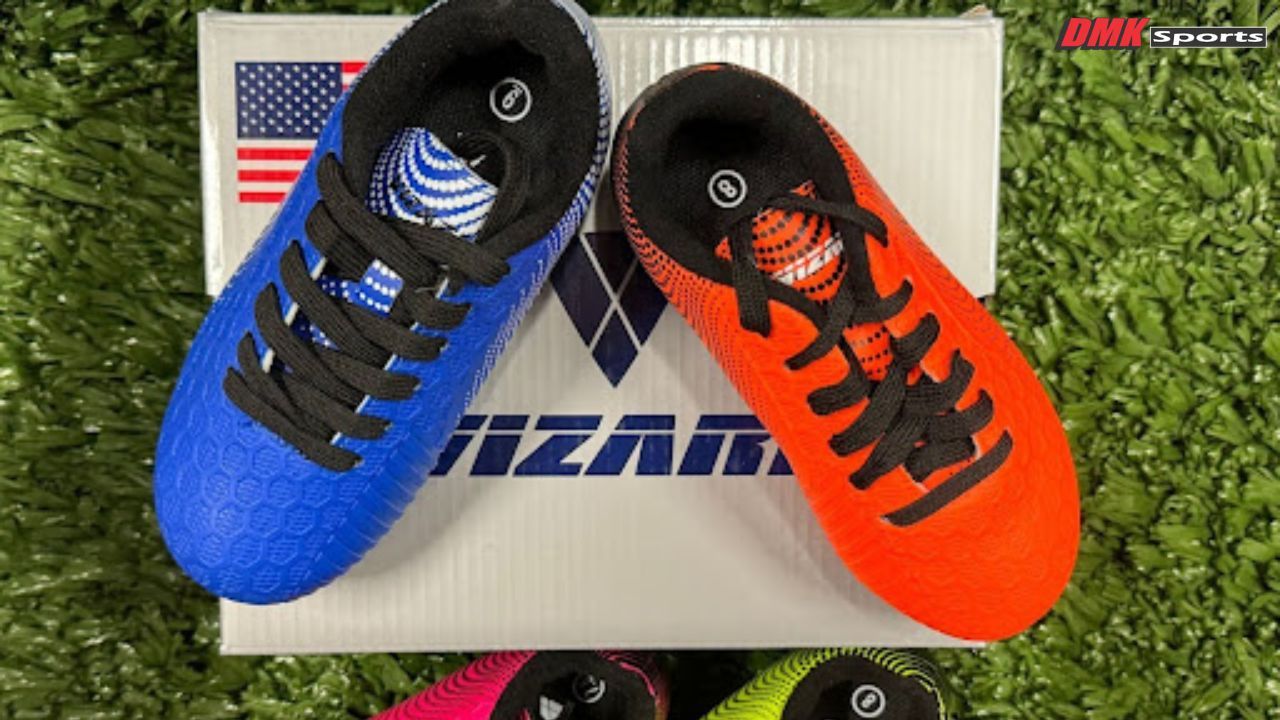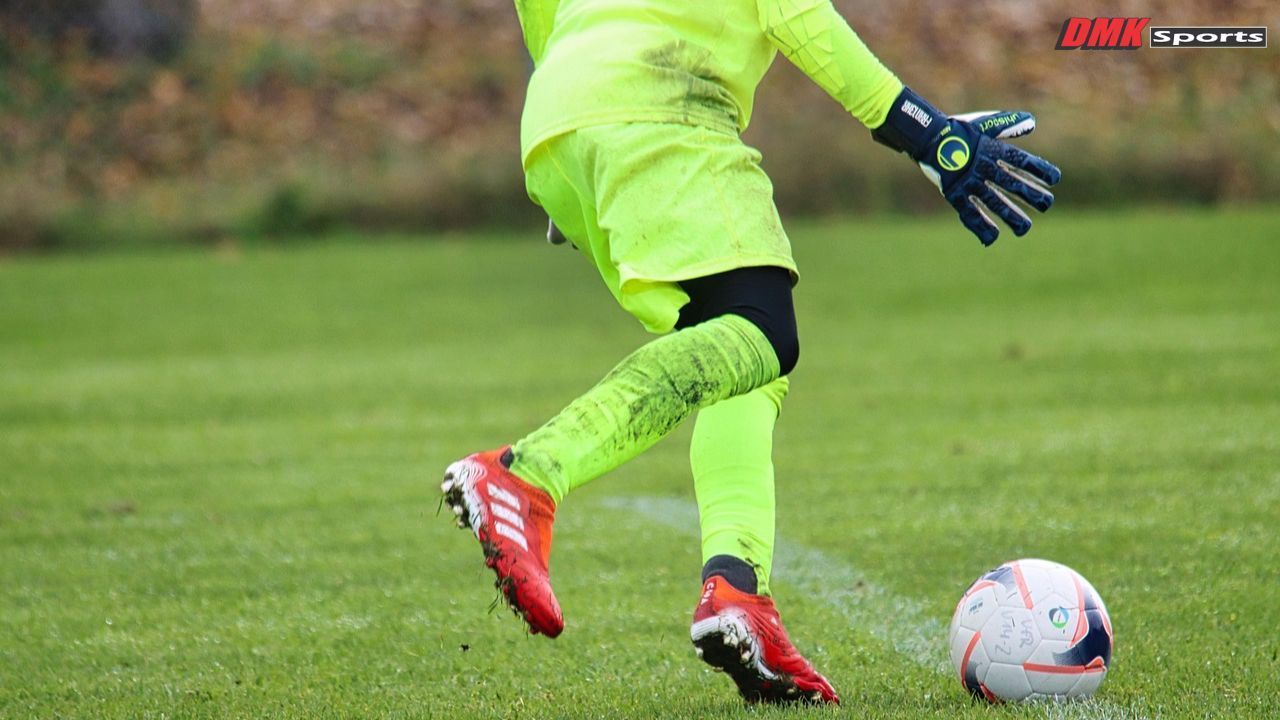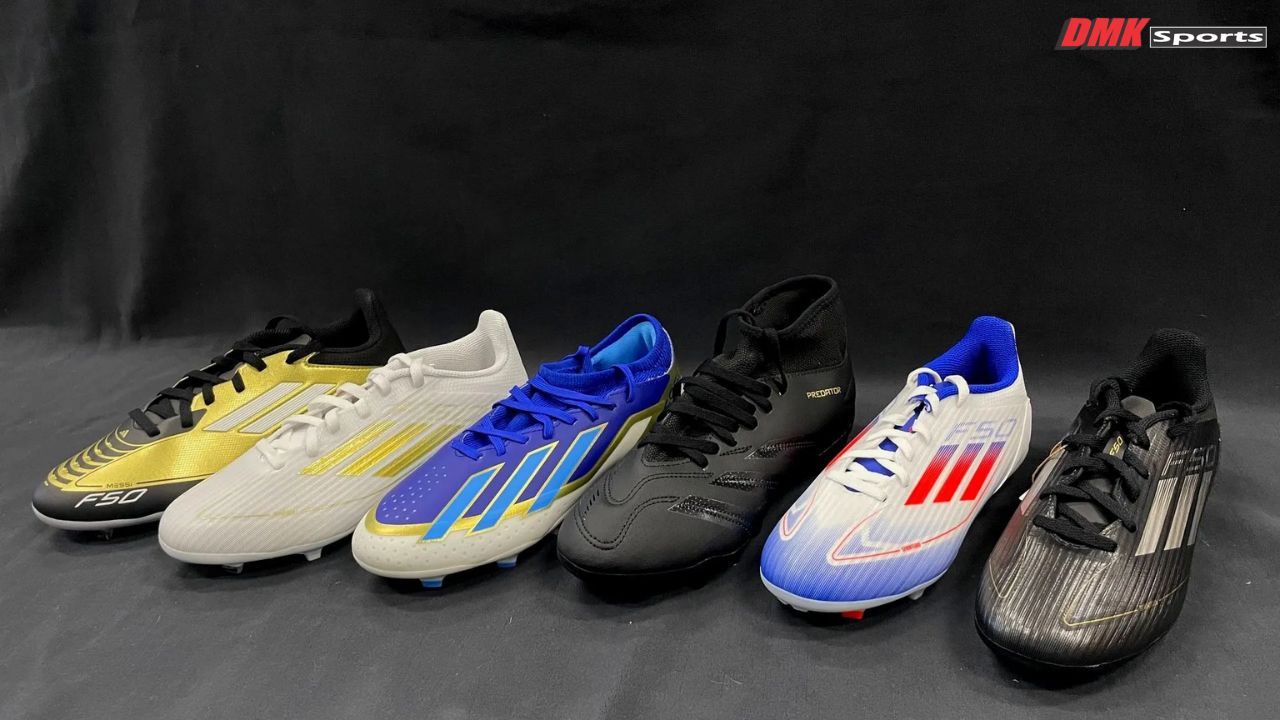The Difference Between Indoor Soccer Shoes and Turf Shoes Explained Simply

Knowing the difference between indoor soccer shoes and turf shoes can help you choose the right footwear for soccer and avoid injuries.
Indoor soccer and turf soccer are fast-paced and high-intensity sports. However, when it comes to the playing surface, each one has unique challenges. Wearing the wrong shoe can hurt your performance, lead to slipping and strain, or even injury.
This article helps you pick the right footwear by explaining the difference between turf and indoor soccer shoes, and where to find high-quality ones that suit your needs.
Adult Turf Soccer Shoes, DMK Sports
Quick Breakdown: Indoor vs. Turf
- Indoor soccer shoes have flat, non-marking rubber soles for smooth surfaces.
- Turf shoes have small rubber studs to grip artificial grass.
- The difference lies in traction, cushioning, and durability.
Both indoor and turf soccer shoes are built for speed and control but perform best on the surface that they’re specifically designed for.
Features
Traction and Grip
One very noticeable difference between indoor soccer shoes and turf shoes is in their soles. Indoor soccer shoes feature a flat bottom that offers good traction on smooth gym floors without leaving marks on the playing surface. They help you make quick cuts and tight turns on wood or even polished concrete.
Turf soccer shoes have multiple tiny rubber studs which are ideal for artificial turf. They give you grip on the rougher surface, especially during sprints and fast changes in direction.
Therefore, considering turf soccer shoes vs indoor ones, wearing indoor shoes on turf leads to poor traction and faster sole wear. At the same time, trying to use turf shoes indoors can damage floors or cause slipping.
Cushion and Comfort
Indoor courts have hard playing surfaces. Indoor soccer shoes are built with low-to-ground cushioning that helps absorb impact. They’re light and responsive.
Turf shoes have more padding and thicker soles to reduce pressure on your feet when running on bumpy surfaces, including turf. The added grip from studs makes them more stable during the game.
Durability on Surfaces
Using the right shoe on the right surface helps them last longer as that’s what they’re designed for. Wearing turf cleats indoors can wear down the studs, while using indoor shoes to play on turf will damage the smooth sole.
Always use the correct pair based on the field you’ll be playing on. If you play on both types often, it’s smart to own both indoor and turf soccer shoes.
FAQs
- Can you wear turf shoes for futsal?
No. Turf shoes are too stiff and heavy for court movement. - Can you use indoor shoes on turf?
You can, but you’ll lose grip and wear the shoe out faster. - Can turf shoes be used for indoor soccer?
Not recommended. You risk slipping and hurting the floor. - Do you need cleats for indoor soccer?
No. Indoor soccer shoes do not have studs or cleats.
Now that you’re more aware of the difference between indoor soccer shoes and turf shoes, these answers should seem natural.
Best Use by Surface Type
Surface
Best Shoe Type
Key Feature
Gym floor / court
Indoor soccer shoes
Flat, non-marking soles
Artificial turf
Turf shoes
Rubber studs for grip and balance
Outdoor grass
Outdoor soccer cleats
Long studs for deep traction
How to Choose the Right Pair
- Identify your primary playing surface (very important).
- Choose flat, non-marking rubber soles for indoor courts.
- Pick small rubber studs for artificial turf.
- Look for comfort, breathability, and a great fit. Not to mention, try on and get the right size that’s neither too tight nor too loose. The pair should be snug yet offer full range of movement.
- Avoid using indoor shoes for turf and vice versa, to stay safe while playing, and to make your shoes last you a long time.
Recommended Reads
- Adult Indoor Soccer Shoes Guide
- Best Indoor Soccer Cleats 2025
- Soccer Cleats vs Football Cleats
- The Benefits of Laceless Soccer Cleats
These guides explain surface types, cleat builds, choosing based on playing style, and more. You’ll find expert tips and best product options because everything is in one place.
Why Shop at DMK Sports
- A wide selection of both indoor and turf soccer shoes
- Pages tailored for different foot types and playing surfaces
- Up-to-date guides with trusted advice
- Featured collections to match your skill level and budget
- Easy access to detailed reviews and buying tips
Family-owned soccer store, DMK Sports, offers quality products, real reviews, and expert recommendations, making it your top choice for all your soccer needs. Shop for high-quality soccer footwear from top brands for men, women, and youth, for both indoor and outdoor soccer needs.
Final Thoughts
Understanding what is the difference between indoor soccer shoes and turf shoes helps you make better decisions in investing in the right pair of soccer cleats for your needs.
Finally comparing indoor vs turf soccer shoes, indoor shoes are great for courts with flat soles and quick response, while turf shoes are made for artificial grass with studded grip and added cushioning.
Wearing the right shoe not only improves your performance and protects your feet as you play, they make every match more fun.










